Basil - a grassy fragrant plant, a favorite spice, which is successfully used in cooking for the preparation of first dishes, meat, vegetable dishes, sauces and fresh salads, both in fresh and dry. Riding a spice from Asia, the Basilica worshiped in Iran, Ceylon and India, and later the Europeans appreciated his multifaceted fragrance. Translated from the Greek "Basil" - "Royal" or "Tsarsky". There are several varieties of grassy plants that are distinguished by the appearance of the bush, aroma and coloring leaves. Different types of scented basilica are grown in all corners of the world. The purple basil is most popular in our latitudes, and Italians do not represent their dishes without fragrant leaves of green basil. How to grow fragrant basil on its summer cottage and how to care for the plant?
Basil Description
Basil is an annual plant that forms a small branchy and decorative bush with a height of 20-60 cm (depending on the type and variety of the plant). Basil leaves differ in shape, color and magnitude. May be bright green, purple, oval and oblong shape, large and small. 
But there is between all the variety of color and the shape of the leaves one major similarity is their divine spicy fragrance they exude. Basil - a thermal-loving plant and is afraid of frosts, as a rule, is grown by a seedler. The flowering time of the plant - the middle of the summer, at the ends of the shoots there are inflorescences consisting of several small flowers of various shades: white, pink, light - purple. Cups, stalks and leaflets of the plant are a bit rough to the touch, it is in them there are glands with essential oil, which gives the basil spicy pleasant fragrance. 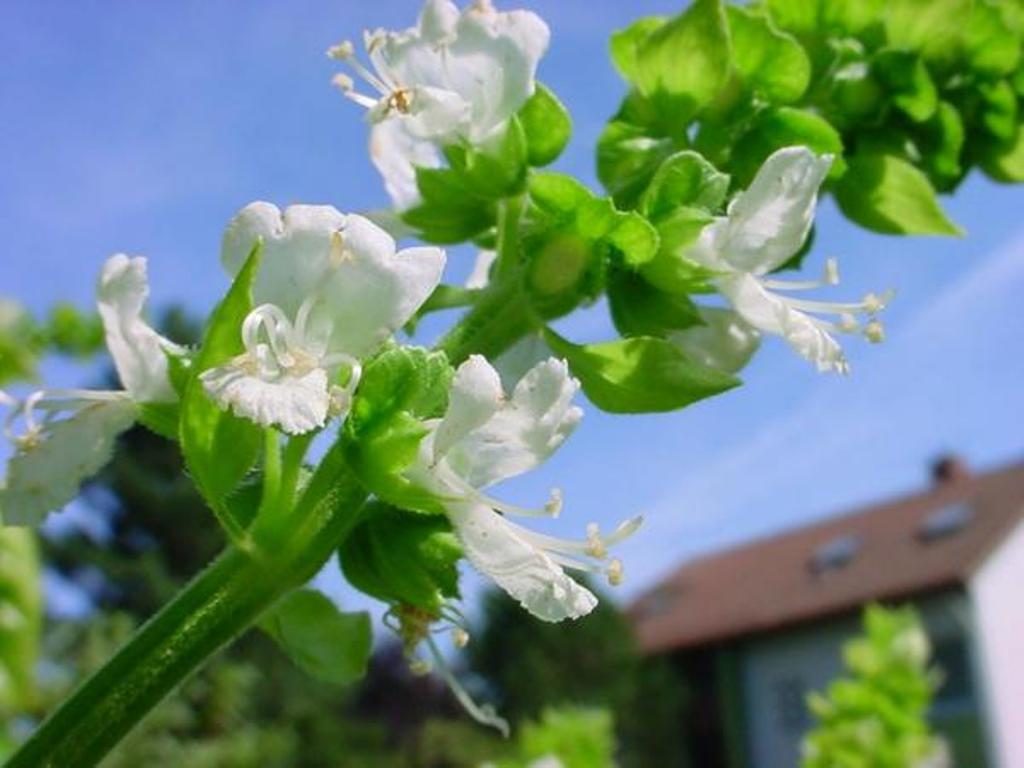
Types and varieties of basil
In nature there are more than 70 types of basilica. They are distinguished by the height of the bush, shape, size and painting fragrant leaves. Consider the most popular types and varieties of plants.
Basil scented (camphor, ordinary). The view of the world's view of the Basilica worldwide. Plant with branched deciduous mass. The bush is high, from 55 to 70 cm. Its stem and leaves are slightly pubescent, the fragrance is soft, pepper, reminds the clove. The best scented basil varieties:
- Basil Magical Michael - branching grade;
- Mammoth Basil - Large leaves, are distinguished by sharp spicy taste;
- Basil Genovese Gigante is the most favorite Italian variety.
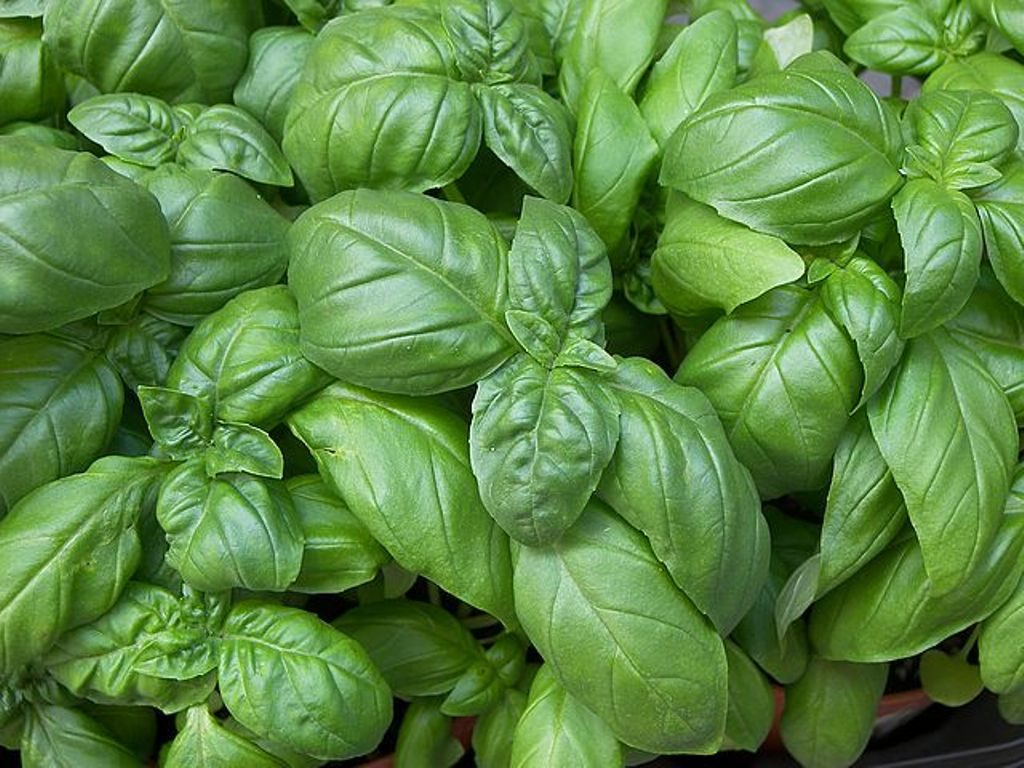
Basil cinnamon. The second name of the species is Mexican. The plant height up to 60 cm, the leaves are shiny, blooms with flowers of lilac. The leaves of this species have a pronounced cinnamon fragrance, hence the names of the view occurred. Among the varieties can be allocated:
- Cinnamon
- Gentle early
 Basil purple. The most common type of basil grown in our region. Leaves of the species - bright, reddish-purple color with severe fragrant aroma. Casting large, fleshy, with a tart taste, they are used to prepare many Asian and Caucasian dishes. The most common varieties:
Basil purple. The most common type of basil grown in our region. Leaves of the species - bright, reddish-purple color with severe fragrant aroma. Casting large, fleshy, with a tart taste, they are used to prepare many Asian and Caucasian dishes. The most common varieties:
- Purple
- Mauritanian
- Suggy
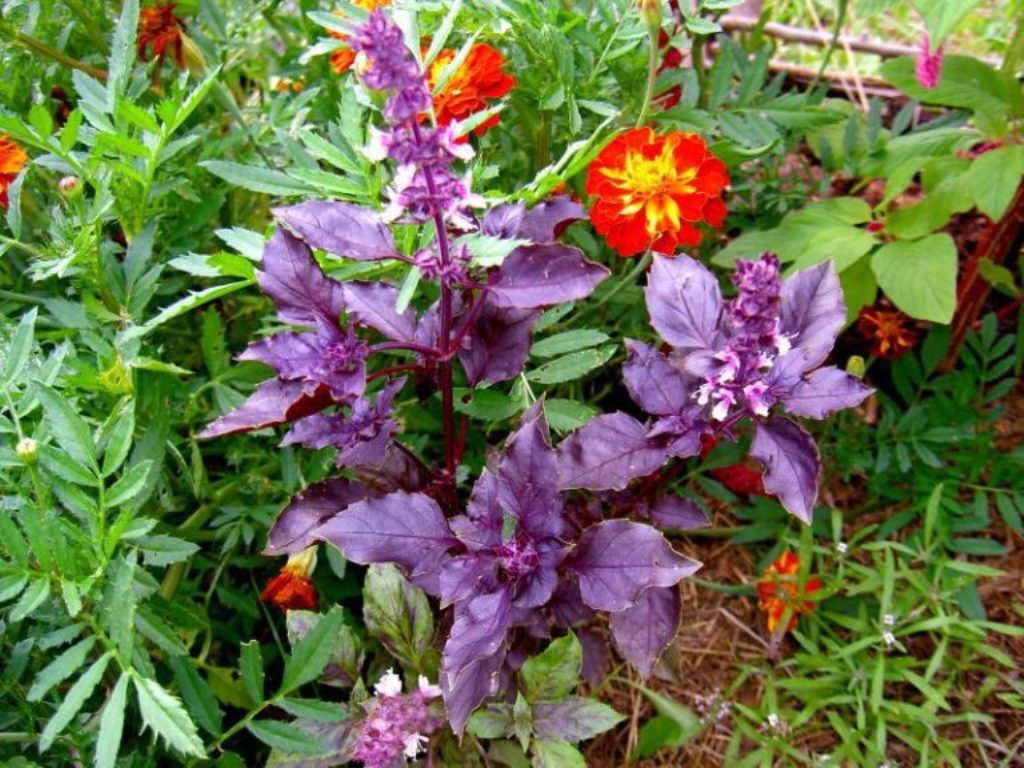 Basil lemon. Semi-scattered low plant up to 35 cm with branched deciduous weight. Self-green leaves exude spicy lemon flavor and have lemon flavors. Gardeners prefer to grow such a variety of lemon basilica:
Basil lemon. Semi-scattered low plant up to 35 cm with branched deciduous weight. Self-green leaves exude spicy lemon flavor and have lemon flavors. Gardeners prefer to grow such a variety of lemon basilica:
- Citric
- Spark
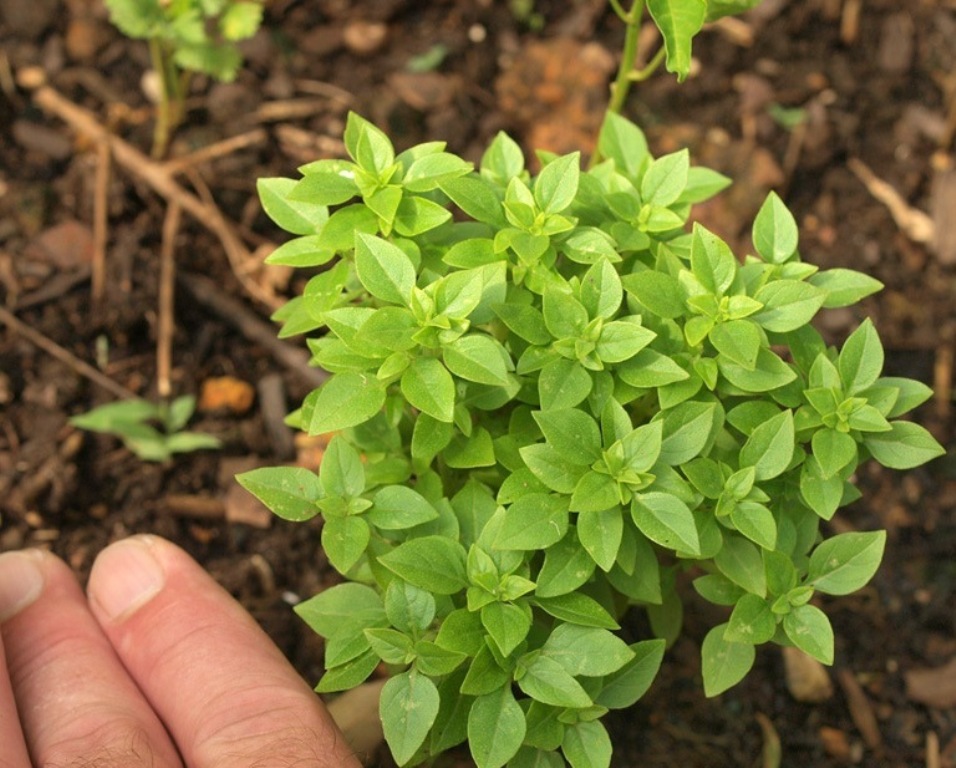 Basil green. Low chops reach a height of up to 45 cm. Leafs of a light green shade, have a light fragrance and a delicate taste. Among famous varieties can be allocated:
Basil green. Low chops reach a height of up to 45 cm. Leafs of a light green shade, have a light fragrance and a delicate taste. Among famous varieties can be allocated:
- Green Vasilek
- Tone
Black basil. Bright and unusual view of the basil. Its stems and leaves have a rich dark purple shade, sometimes black. It has excellent spicy and burning aroma. Widely used in dried form. Famous varieties:
- Baku
- Ruby Cairo.
Basil red. Branched bush of small height. The leaves are painted with a lilac-red shade, fragrant. Famous varieties:
- Generous
- Oriental Guest
Basilica
Basil is a thermal loving and demanding culture of the soil fertility. Observing all the optimal conditions for growing fragrant spices, you can grow a rich Basil harvest in your country. You can grow a plant both on a nucleotop bed and on the windowsill. Planting a spicy basil in an open soil is possible in two ways: seeds or seeding, which is the optimal landing option.
Plot and primer for basil
Plot for growing spiced grass Choose solar, well-warmed and protected from drafts. Basil prefers light fertile and well-drained soils. It is possible to plant a plant after growing on the site of vegetable crops, such as potatoes, tomatoes, legumes.
Soil for planting must be prepared since autumn. Groaning under the planting of culture must be accurate by 20-25 cm and put in the soil organic fertilizers at the rate of 1 square meter of soil:
- humid (compost) - from 3 to 5 kg;
- superphosphate 22-25 grams;
- potash salt -15 gram.
Dropping the soil, remove all the rhizomes of weeds so that they do not interfere with developing and growing the young seedlings of the Basilica. It is necessary to fully clear the site from weeds to obtain high yields.
In the spring prepared for landing the basil area, it is necessary to align with robbles and make mineral fertilizers to the ground at the rate of 1 meter square:
- nitrogen fertilizers 10-20 grams;
- phosphoric 30-40 grams;
- potash 10-20 grams.
Landing the Basilica in Open Soil in the form of seedlings
Landing the basil in the form of seedlings is a popular method of growing spicy culture to obtain high yields in early terms. Planting the seeds of Basilica to seedlings follows in late March or early April.
Stages of work:
- Prepare seed containers or boxes. Capacities should have drainage holes, as it is impossible to allow soil moistening. The bottom of the container is stacked by a drainage layer (small pebbles, foam, ceramzite).
- Prepare the landing ground. The soil for seedlings should be a light enriched with humid and peat.
- Basil seeds before landing must pass the disinfection procedure. Prepare a saturated solution of mangartages and soak seeds in it for 2 hours.
- Seeds spread on the surface of the soil, observing the distance of 5 cm from each other. Pour them with a small layer of land in 1 cm. Seedlings need to be covered with transparent material: film or glass. Check the crops regularly and spray from the sprayer.
- The germination of basil seeds occurs at a temperature of 23-27 degrees of heat. After 7-10 days, wait for the appearance of the first germs that need a moderate watering with warm water, as the soil grain. The film must be removed, and container put into a warm, illuminated place, such as the windowsill.
- As soon as the first leaflet grows, the Basil seedlings can be divened to individual pots, select the volume 5x5, 6x6 cm. After about 10 days after the sewage landing, they must be filled with mineral fertilizers. Prepare a solution of 1 liter of water: 2 g of nitrate and 3 g of superphosphate.
- At the beginning of the summer or late May, after the appearance of several strong leaves in the amount of 4-5 pieces, young shoots can be planted into the ground.
Basil: landing in open ground
At the end of May, when the soil is already warmed enough (up to 15 degrees), seedlings from the pots can be planted on the bed, observing the distance between bushes 25-30 cm. The depth of planting the coastal into the ground - about 10 cm. Earth should not only warmly warm, but and moisturized, so before planting it is necessary to pour it well. The young plant should be planted so that its main kidney and the lower leaves are located above the ground. For planting, choose a cloudy day so that the sun does not burn the tender leaves of the young plant.
For the growth of the bush and obtaining lush leaves, the top of the basilica must be discharged at the stage of appearance of 5-6 full-fledged leaves. The plant will begin to grow stylish. As a result, you will get thick lush bushes of fragrant greenery. When the first inflorescences appear - they should also be deleted in a timely manner, for the further development and growth of the bush.
Basil: landing seeds
Residents of the southern regions can plant the seeds of the Basilica immediately in open ground. As a rule, at the end of May, when culture landing is carried out, there are no night freezers in these regions, and the soil has time to warm up to 15 degrees of heat. If you live in the northern or central part of the country, then for the landing of the basilica, it is recommended to use a seaside method of growing, which was mentioned above. Basil - a thermal-loving culture, even small temperature fluctuations, its decrease or night frosts can damage the shoots.
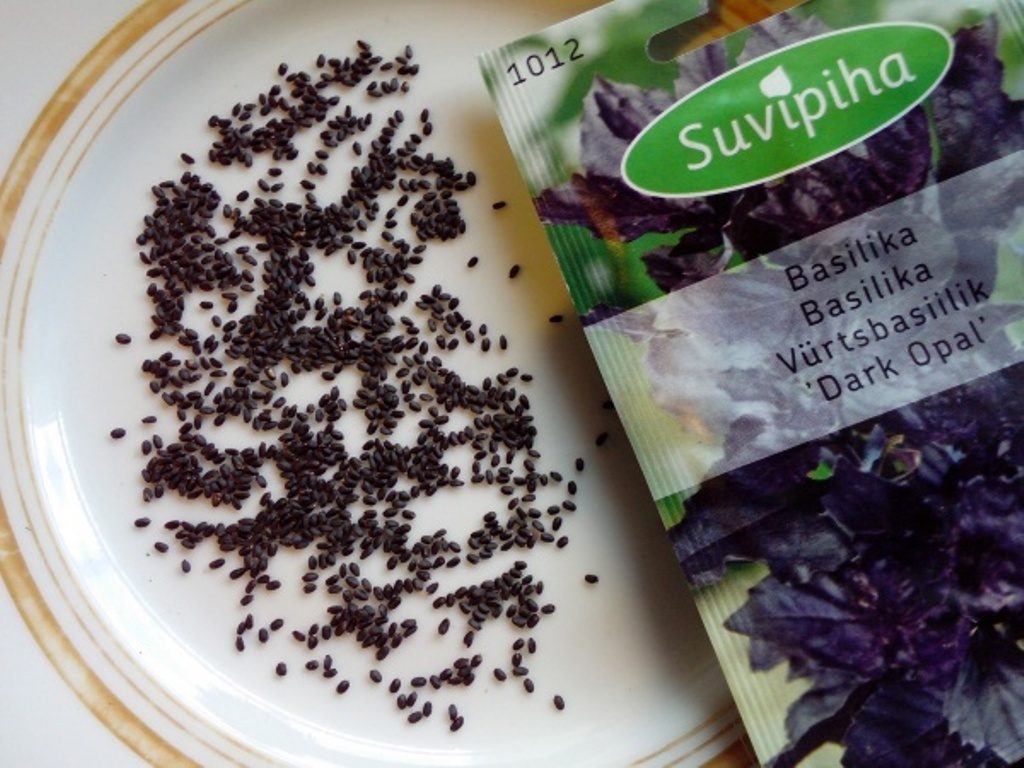
Before planting seeds, it is necessary to disinfect them in a solution of manganese. Prepare in advance shallow wells for landing (0.5-1 cm), the soil must be sufficiently moistened and loose. Squeeze the seeds of the piece, and it is better to pairly for a greater germination, observing the distance between the landings of 3 cm, and between the rows of 30 cm. After drinking seeds, the site needs to be covered with a film by creating a small greenhouse. As soon as the seeds are sprouting, after about 7-10 days, the film should be removed.
Basilic care
Basil care is easy. He needs regular watering and soil looser, it is necessary to destroy weeds. It should be remembered that the convergence of basil does not tolerate, the root of the plant can bend from excessive humidity. Water up the bushes as the soil graze.
During active growth of greenery, bushes need to be filled with fertilizers. The first feeding of nitrogen fertilizer is carried out even before the inflorescences (ammonia niterta 15 g / m2) are formed. About a month later, phosphoric fertilizer can be made to the soil (superphosphate 10-15 g / m2).
Basil's busils should be well lit, if the plant is not enough sunlight - its growth is reduced, the leaves become small, their taste is worse. Basil is growing and gives a lush greens before the onset of autumn cooling. You can dig up bushes and transplant them to a room pot and move it to the house. So you will have a fragrant greens at your desk all year round.
How to grow basil at home on the windowsill
You can grow a fragrant spice on the windowsill. The main conditions for a successful harvest: the solar south window, fertile lightweight drainaged soil and regular watering plants. You can grow a basil in a pot from seeds or with a stalk. You can buy a cutlery in the store or dig out of beds. Landing with cuttings - the easiest way to grow fragrant cookies, they are easily rooted, and quickly begin an active growth. Grow a basil in a pot of seeds - a longer process. When landing in the autumn-winter period, shoots will need additional lighting of the lamp, since with insufficient illumination the shoots will begin to stretch up.
Before planting in a soil, the seeds are soak in a milgantan solution for several hours. Prepare pots for landing with drainage and soil (1 part of biohumus and 2 pieces of coconut fiber). The landing depth is 1 cm. After landing, the pot is covered with a transparent package. At the temperature of the room 22-25 degrees, the first searches will appear in 5 days. Next, the plant requires standard care - ensure it watering, good lighting and warmth.
Diseases and pests
Basil is not subject to the attack of insect pests and racks to many diseases. But under adverse conditions of cultivation, the plant is most often affected by fungal diseases:
- Fusariosis. The cause of the disease is sharp air temperature drops or planting plants into heavy clay soil. Stems of young plants become thin, weak, brown spots are noticeable on them. The top of adult bushes dries, their root system is affected, which leads to the death of landing. A bushes affected by fusariasis must be removed.
- Black leg is a disease that affects the seedlings of the Basilica. The fungus is striking the root neck of young shoots, it softens, skews and seeds die. The cause of the disease is increased humidity of the soil, acidity, its poor water permeability.
- Gray rot - fungal disease. A brown dry spots appear on the leaned peasants of the leaves that apply to the stems. Over time, the stains become watery, covered with a gray gun.
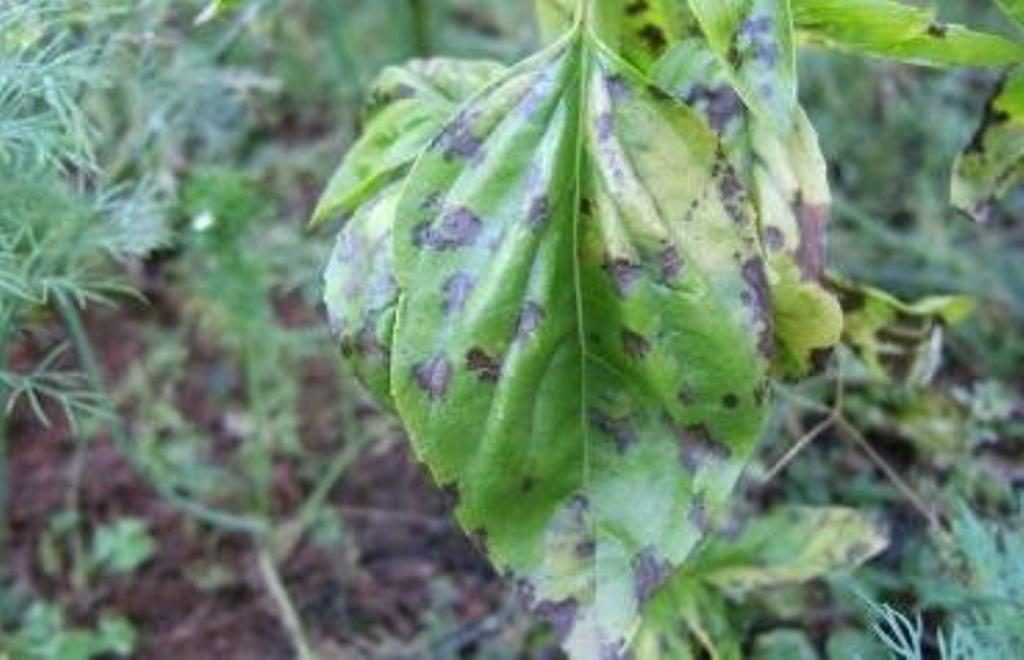
How to secure the basil from infection with fungal diseases:
- It is not recommended to grow fragrant culture in one place for more than 2-3 years
- Before planting in the soil, the seeds should be disinfected in the heatman's solution for 2 hours.
- Plant plant needed
- It is recommended to "frank" the soil of deciduous trees
- Observe regular and moderate watering Basil bushes, avoiding the mooring of the soil
- Shoots that are temporarily covered with film, regularly ventilate
- When the first signs of the disease are found, remove the plant from the bed along with the land.
- At the initial stage of the fungal disease, the spraying of the bushes on the onion husks. (husks pour boiling water, to insist for a day). Spray the basil with a fluid solution.
Pests Basilica
Among the hazardous pests of spiced greenery are distinguished to a torture and field cloud.
- Aphid. This pest causes irreparable harm to the plant, sucking from its leaves and skes juice. The plant becomes sluggish and stops her growth. In the fight against the tool, a solution of the tar soap (100 g of grated soap in 10 liters of water) perfectly helps. Among the chemicals are effective: carboofos, akarin.
- Field (meadow) bug. Harm the basil is applied and adult individuals, and its larvae, feeding the plant juice. In the fight against pest, the use of carboofosa bankol, accomplishing
Harvesting and drying
When the plant reaches a height of 10-15 cm, its leaves and shoots can be cut into greens and use for the preparation of fragrant dishes. If you want to put the leaves for the winter, the best time to harvest is the beginning of the flowering of the plant. It is during this period that the fragrance of greenery is most saturated with essential oils. Basil can be dried in two ways:
- Tie the stems with leaves in bundles and make them up in a well-ventilated room or on the street.
- Eliminate the torn leaflets to dry on paper, not forgetting them to turn them over to prevent their posting.
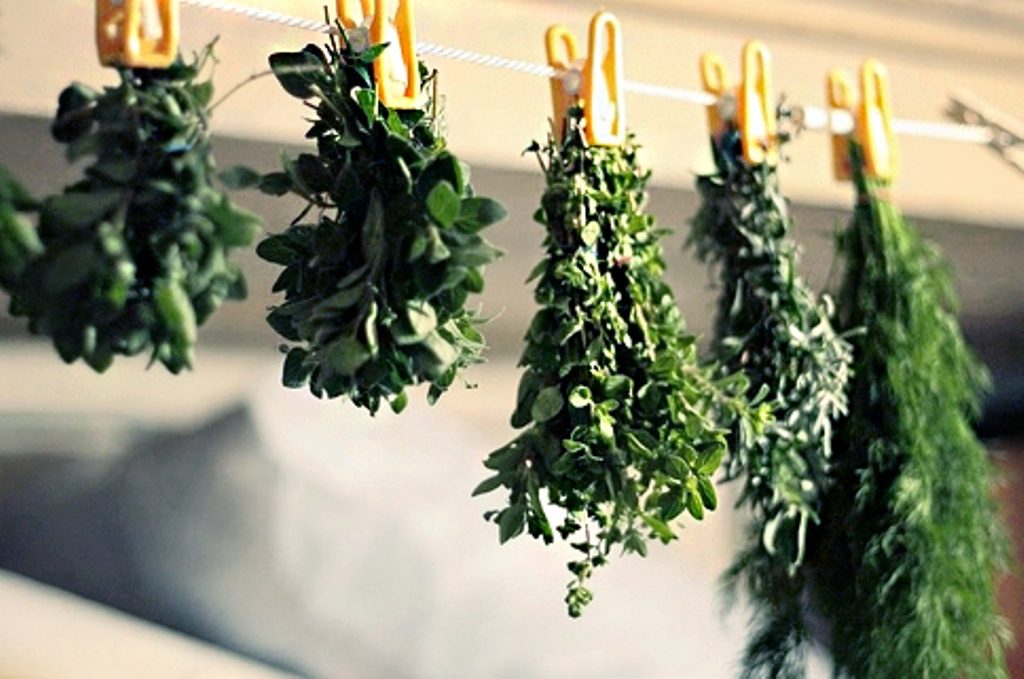
Basil must be dried at a temperature of not more than 35-36 s, since at high temperatures its essential oils will be destroyed. Well dried stems and leaves are perfectly erased to the state of the powder and are ready to use. Store dried basil should be kept in glassware, faience with a hermetic lid. Storage time from 3 to 4 years.
In compliance with all rules of growing and care for the thermal-loving plant, you can provide the whole family of aromatic spicy and useful greens all year round. Favorite dishes dried basil, you will give them an extraordinary taste and spicy oriental fragrance.
How to plant a basil for seedlings, see the following video:

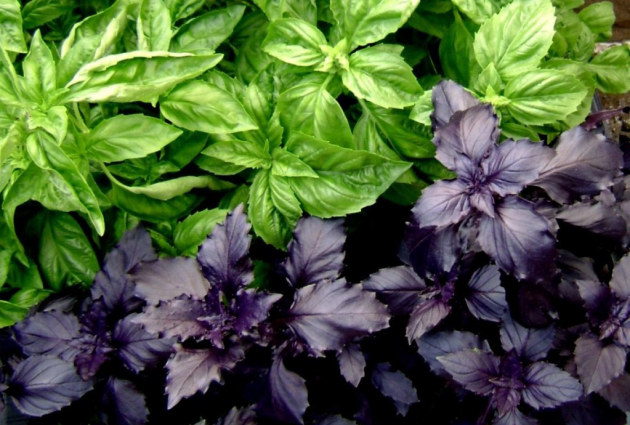
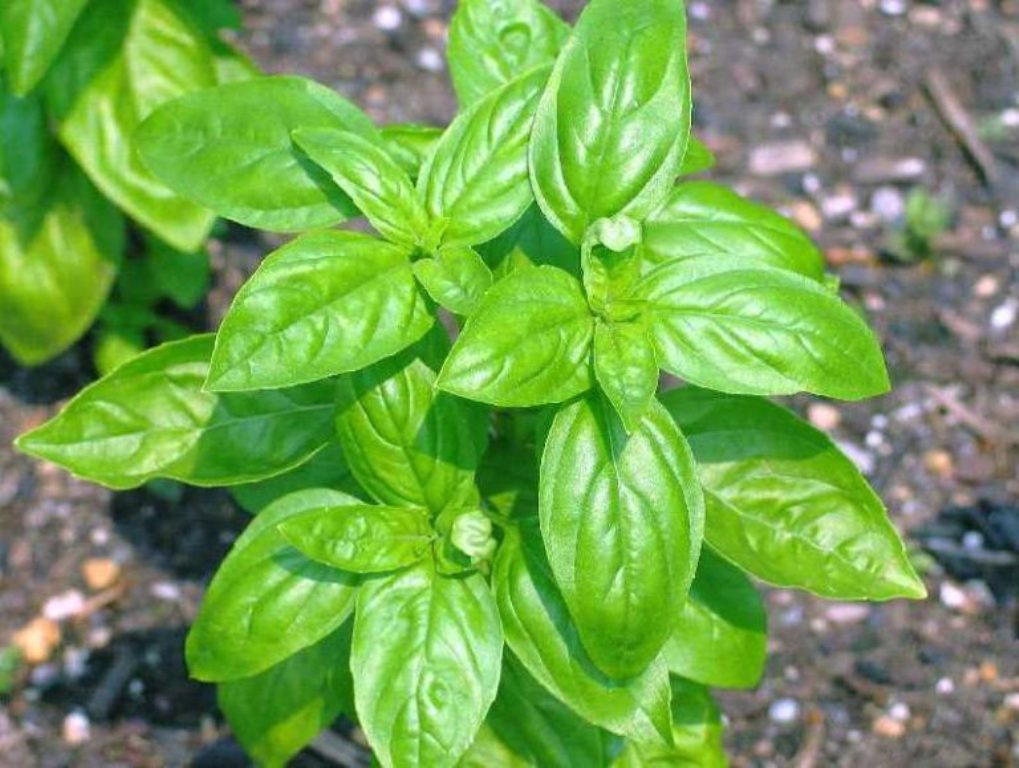
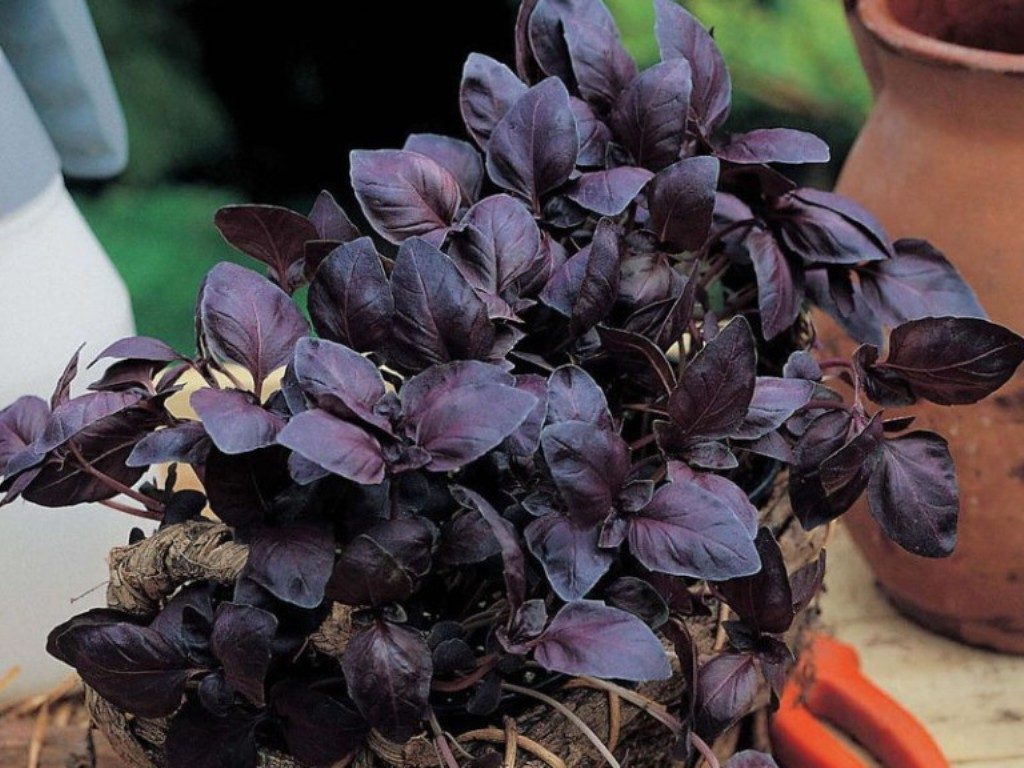
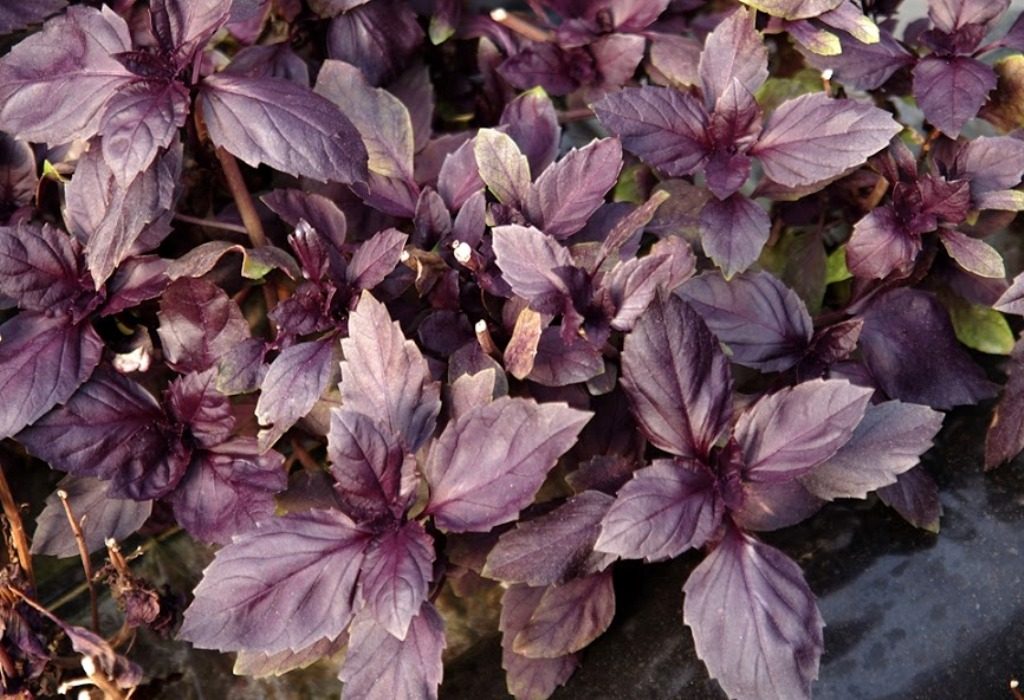
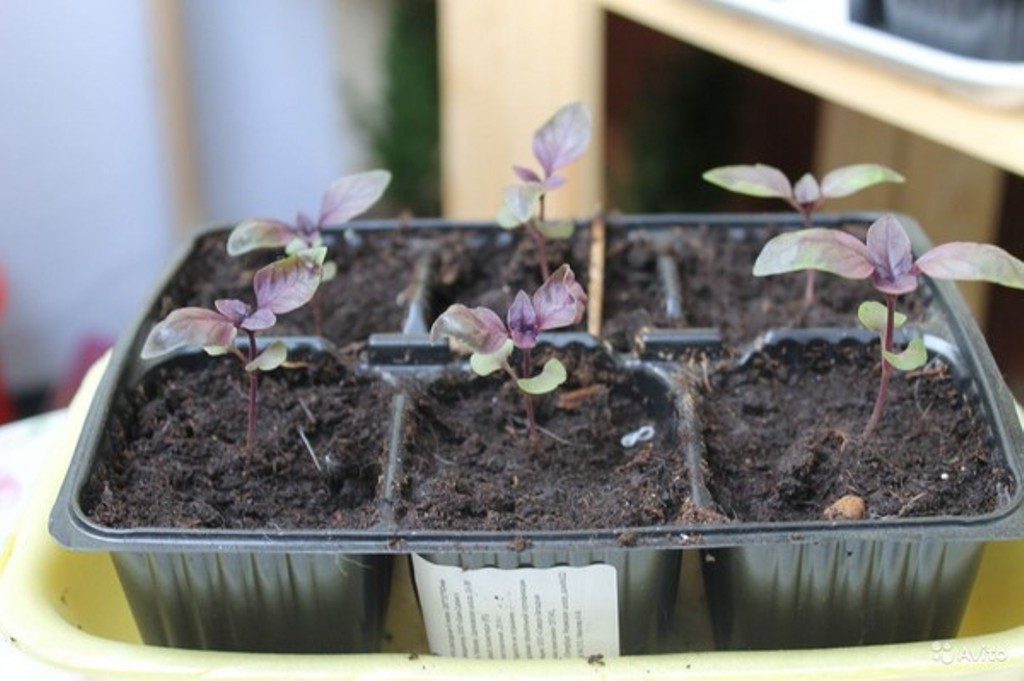
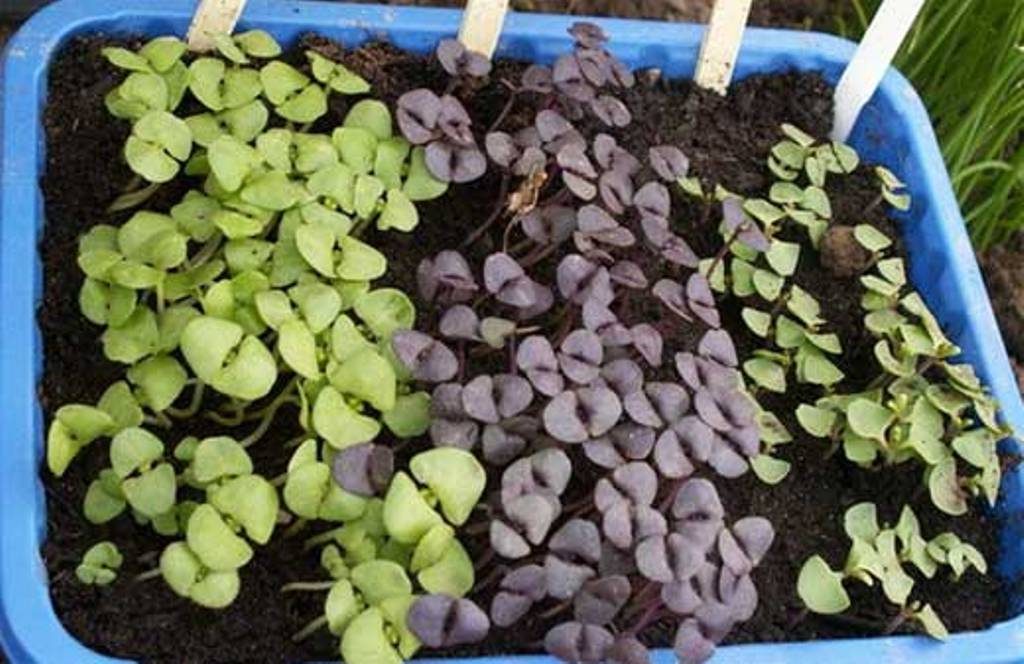
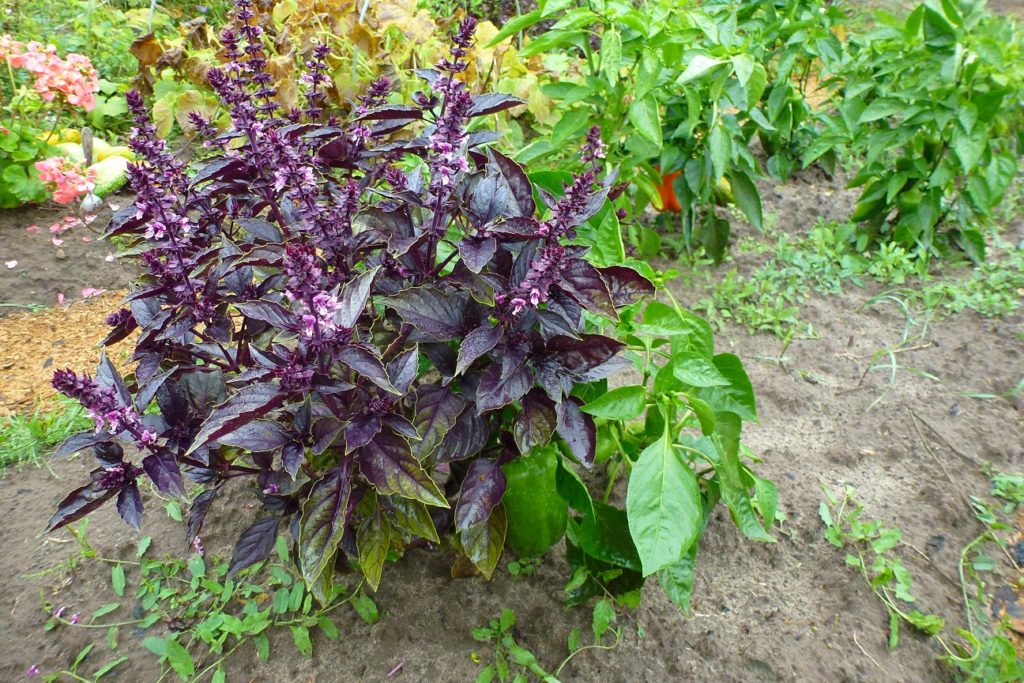
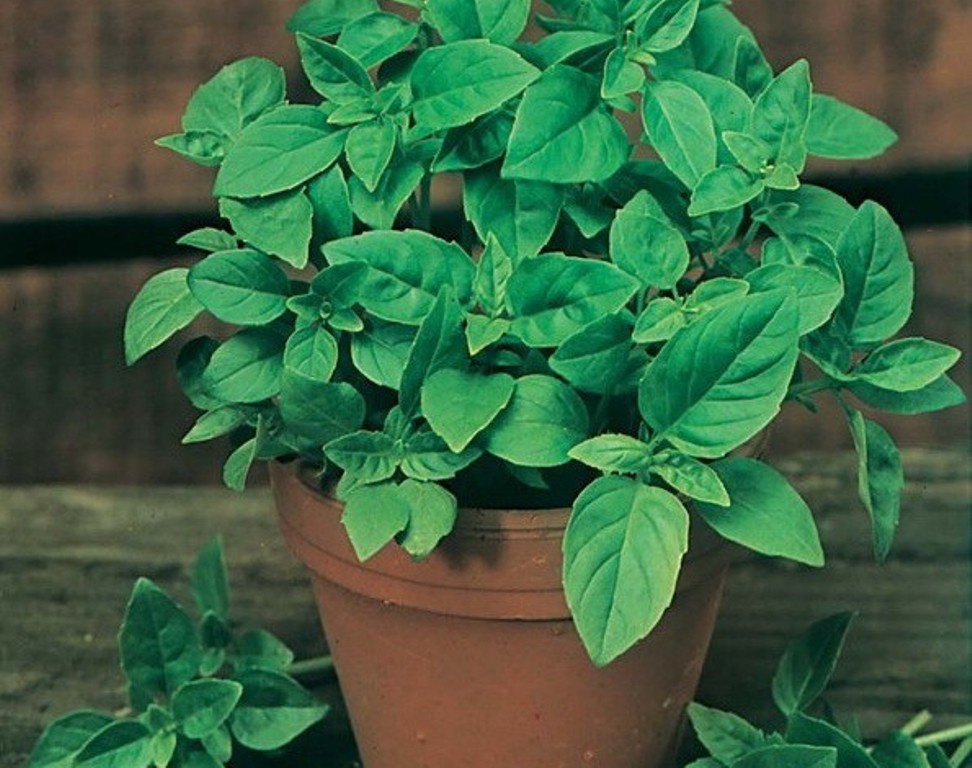
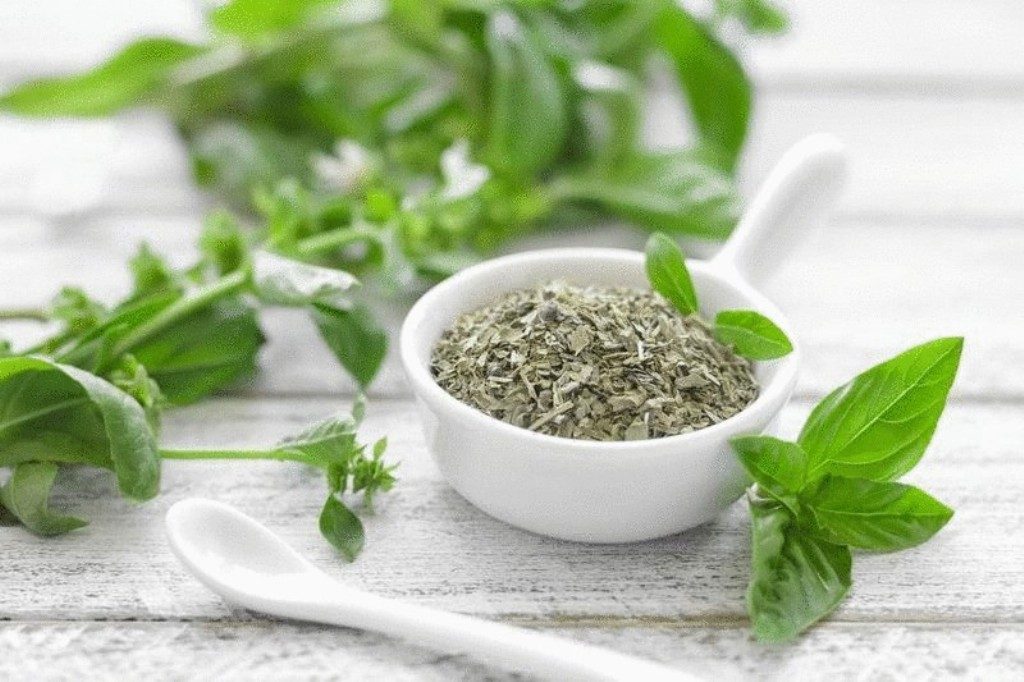












 Start a discussion ...
Start a discussion ...